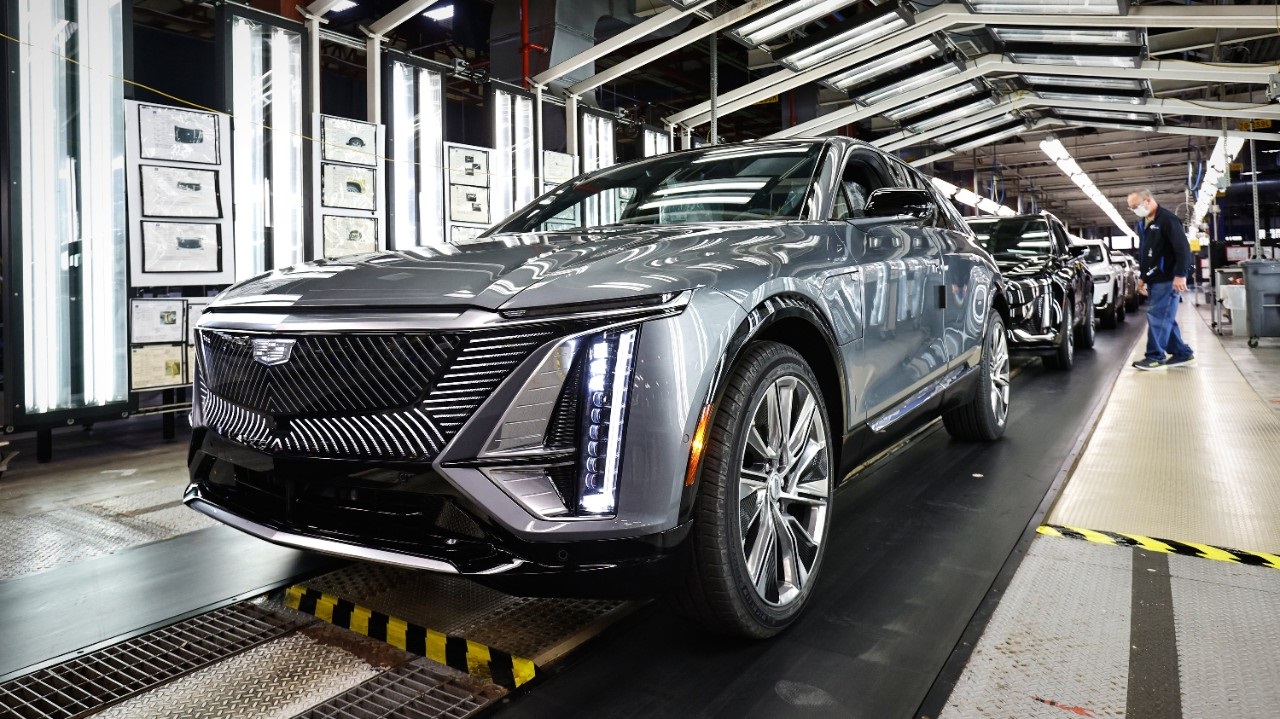Automotive: Child Labor Slaves expose fallacy of Electric Vehicles
Child labor slaves in the Congo are being used to mine Cobalt for your electric car. They are dying of cancer and other health issues, exposing the fallacy of electric vehicles.
Major carmakers Stellantis and Toyota recently criticized the U.S. Environmental Protection Agency’s (EPA) “overly optimistic” plans to promote vehicle electrification, which they warn is unrealistic and gives rise to a host of issues, including an increase in mining – mines that are largely owned by the Chinese.
SLAVES: 40,000 child slaves in Congo are forced to work in cobalt mines so we can drive electric cars.
h/t @JamesMelvillepic.twitter.com/V4eR349y1c— @amuse (@amuse) July 11, 2023
On April 12th, the EPA announced new rules aimed at cutting down greenhouse gasses and other pollutants in motor vehicle emissions. The agency estimated that approving the rules will result in 67 percent of new passenger vehicles and light trucks being electric vehicles (EV) by 2032. In addition, 50 percent of buses, 35 percent of short-haul freight tractors, and 25 percent of long-haul freight tractors are also estimated to become electric.
In comments filed with the federal government, Toyota and Stellantis called EPA expectations “overly optimistic.”

In its comments, Toyota noted that “hundreds of new mines” will have to be set up globally to produce enough critical materials necessary to manufacture the electric vehicles needed to meet EPA’s 67 percent target.
“The sources for those minerals are almost exclusively outside the U.S., as is most of the mineral processing to turn the ore into usable battery-grade material. And the charging infrastructure (both in-home and public) needed to support that level of electrification is far from where it needs to be,” the company said.
“Regardless of how quickly the needed shift to electrification occurs, vehicles with internal combustion engines (ICEs) will be on U.S. roads in large numbers for decades to come.”
Electric Charging Infrastructure
Stellantis explained the challenge of electric chargers in its comments.
The auto manufacturer cited an estimate by Alliance for Automotive Innovation which said that there could be up to 40 million electric vehicles on the road by 2030, requiring over 5.8 million public chargers.
Stellantis did not even take the numbers into its calculations. It reduced the estimates by 35 percent to 26 million vehicles and 3.8 million chargers. At present, there are 200,000 public chargers across the United States.
Adding in the additional 500,000 chargers proposed under the bipartisan infrastructure law, there could be 700,000 chargers by 2030, which is less than a fifth of the 3.8 million chargers required for the 26 million vehicles estimated by Stellantis.
“Additionally, approved funding is only the first step to deployment of a new infrastructure—property needs to be purchased and chargers need to be installed and available to the public, which takes time,” the company said.
“These assessments represent estimates for light-duty vehicles. The charging needs for medium-duty vehicles—also required to grow dramatically by the EPA’s proposed rule—is much larger.”
The carmaker noted that EPA’s expected transition rate to EV far exceeds even “ambitious targets” set by the Biden administration together with the vehicle industry.
“The EPA bases these EV penetrations on an overly optimistic outcome of policy actions that represent only a fraction of what is needed to support a mature EV market.”
“We’re obviously not going to have 42 times the lithium we need in anything remotely like the folks who are talking about this transition intend,” Mr. McKenna said. “The American people don’t want this.”
In January, a team of scholars from Providence College and the University of California–Davis published a report warning that America’s transition from internal combustion engine vehicles to EVs can cause a critical shortage of lithium, a key element required for making electric batteries.
“If today’s demand for EVs is projected to 2050, the lithium requirements of the United States’s EV market alone would require triple the amount of lithium currently produced for the entire global market. This boom in demand would be met by the expansion of mining,” the report said.
“Large-scale mining entails social and environmental harm, in many cases irreversibly damaging landscapes without the consent of affected communities. As societies undertake the urgent and transformative task of building new, zero-emissions energy systems, some level of mining is necessary.”
Unlike other parts of the world, U.S. citizens remain on the sidelines when considering an EV purchase.
According to an April 2023 report by consumer intelligence company JD Power, more Americans are unwilling to buy EVs. In March, 21 percent of new vehicle shoppers said they were “very unlikely” to consider an EV, up from 17.8 percent in January.
“Lack of public charging infrastructure and price have been the top two concerns for the past 10 months, along with related issues involving range anxiety, time required to charge, and power outage and grid concerns,” the report said.
The number of unsold EVs keeps piling up at dealerships across the country.
In second quarter 2023, the average inventory for electric vehicles topped more than 92,000 units on the ground at dealer lots, according to the 2023 Cox Automotive Mid-Year Review presentation. This is up 342 percent compared to second quarter 2022.
